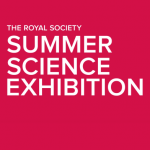Most scientists agree that we have an image problem. This is serious at a time when research is at a premium to inform decision-making as argued so beautifully by Mark Henderson in The Geek Manifesto. We have a new generation of skilled science communicators on television today like Brian Cox, Jim Al Kalil, Alice Roberts and Iain Stewart to name but four and the quality and availability of science reporting has increased dramatically with the digital age. But the focus remains on discovery, the easy or sexy headline and therefore often on the trivial. Complex more nuanced, incremental stories are more often than not ignored. Every publically funded researcher is under pressure to engage the public and to increasingly justify what they do as part of the social contract with the public which funds them. For example, almost all funding in the UK requires statements now about pathways to engagement, but with this focus there is an ever present risk of simply pandering to the trivial and the easy as researchers seek publicity. It is something that I have been accused of myself.
The month of June is here which means for me the inevitable phone call to write something about building the perfect sandcastle. Professor Sandcastle, or the Sandcastle Boffin, was born in the summer of 2004 when I innocently became involved in a bit of summer ‘fluff’ for a holiday company. They wanted a formula for the perfect sandcastle. I obliged and the result caused a small unexpected media frenzy. The formula made it into the tabloids, was reported across the broadsheets and was a perfect regional story for radio and local television that summer. Much to my embarrassment I found myself portrayed as the Sandcastle Boffin. All was light hearted except for a barbed comment in the Independent, my newspaper of choice at the time, which cut deep: ‘haven’t they got anything better to do?’ ‘Yes of course I have, but you’re not interested in what I normally do’ I might have replied. The barb of triviality stuck fast.
The thing about the sandcastle story is that it would not die, despite the fact that the original research was never worthy in my view at least of publication. The following May I started to receive messages ‘we were so impressed by what you did for sandcastles last year can you . . .’ I was asked to create equations for love, happiness and luck. I turned most of them down but the idea of the ‘science equation as a’ tool was firmly embedded in a new generation of PR consultants. An appearance on the BBC Coasts programme with a linked session at the Cheltenham Science Festival helped cement the sandcastle connection, along with a slow but steady request for articles and radio interviews over the years. Most summers don’t pass without a request of some sort, nor has this one [http://theconversation.com/how-to-build-the-perfect-sandcastle-according-to-science-79600].
I have always delivered something when requested, seeing it as part of my remit as a modern academic to engage with the public slipping in messages about geology and earth history at every turn. I have resisted feelings of rancour when my real research has got less publicity remaining for the most part philosophical; if the public want fluff let them have it, better something than nothing, right? In truth it has done me no harm. The original interest gave me media training like no other and BU likes to remind people of its golden sands. It helped me as an academic appreciate the power and pitfalls of the media and the need for the sound bite and money shot in presenting more serious and challenging stories. Despite this the barb still twists; I am not just trivialising my academic discipline of sedimentology that I care deeply about? Is this not an ever present risk as we strive as academics for more public engagement? It is easy for us to write into funding pitches that we will do school events, give popular talks, create websites, attend and run festivals but does this really engage the public in the value and power of research? Are we not just feeding the media-machine with yet more trivia in lip-service to our funding aims? I have no idea whether my work on the perfect sandcastle over the years has made any real difference, it is impossible to quantify in terms of output. The truth is that measuring the consequences of engagement is hard and often undertaken post hoc. I am left without the answers but a gut feeling that is it better to show that science is all around us even in the humble sandcastle however trivial this may seem, than simply sit aloof concerned only about the more serious science stories that we may occasionally have to peddle.
 Summer Science Exhibition 2023 call for proposals is now open
Summer Science Exhibition 2023 call for proposals is now open How to build the perfect sandcastle – according to science
How to build the perfect sandcastle – according to science










 Up2U: New BU academic publication
Up2U: New BU academic publication New BU midwifery paper
New BU midwifery paper BU academic publishes in online newspaper in Nepal
BU academic publishes in online newspaper in Nepal Final day of the ESRC Festival of Social Science
Final day of the ESRC Festival of Social Science Using Art to enhance Research
Using Art to enhance Research ECR Funding Open Call: Research Culture & Community Grant – Application Deadline Friday 12 December
ECR Funding Open Call: Research Culture & Community Grant – Application Deadline Friday 12 December MSCA Postdoctoral Fellowships 2025 Call
MSCA Postdoctoral Fellowships 2025 Call ERC Advanced Grant 2025 Webinar
ERC Advanced Grant 2025 Webinar Horizon Europe Work Programme 2025 Published
Horizon Europe Work Programme 2025 Published Horizon Europe 2025 Work Programme pre-Published
Horizon Europe 2025 Work Programme pre-Published Update on UKRO services
Update on UKRO services European research project exploring use of ‘virtual twins’ to better manage metabolic associated fatty liver disease
European research project exploring use of ‘virtual twins’ to better manage metabolic associated fatty liver disease